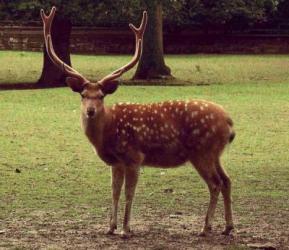Fighting Illegal Wildlife Trade and Consumption in Vietnam Faces Obstacles

As one of the most biodiversely-rich countries in the world, Vietnam has thousands of species of wildlife thriving in its vast greeneries and waters. But like other Asian countries as well, Vietnam has a long history of harvesting and using biodiversity resources. It is estimated that each year in Vietnam, around close to 5,000 tons of wildlife are used as food, medicine, ornaments, and pets. But apart from the legal trade, the illegal trade posed grave threat to the survival of these species.
Reports showed that 66 percent of people who ate wild animals and wore jewelry made from their remains are State employees and business leaders. Though the authorities have issued a series
of regulations on the management and protection of these valuable resources, there are numerous shortcomings in the effective and actual implementation on mitigating the illegal trade and harvest. Indeed, the lack of necessary information, instructions, training and supportive documents are among the major difficulties encountered to carry on the regulations. However, the increasing demand for wildlife consumptions is considered the biggest hurdle.
As leading consumers were high-earners, people who have access to the wild resources took advantage of the lucrative opportunity to earn profits. Rhino horns are considered beneficial to one’s health, though these claims were not yet scientifically proven. When shaved or ground into a powder, then immersed in hot water, the horn is said to be used in treating fevers, rheumatism, and gout. Bear bile is considered by many as a health tonic that cures liver and heart ailments, an aphrodisiac, or an additive in shampoo, toothpaste and soft drinks. It is popularly given to government officials as bribes. Generally, the consumption of wildlife products is a way to show off social wealth or status.
Restaurants preparing wild meat dishes were least concerned of policy enforcements either since most of their diners are the lawmakers themselves. On certain instances, like the case of Tran Kim Dong, police official themselves are involved in the actual trade.
Apart from the identified groups of consumers, reports also show that certain areas are branded as hotspots for wildlife trade. In the Northern provinces, Ha Tinh, Ninh Binh, Quang Ninh and Hanoi have been identified as key consumption and trading sites. In the South, illegal trade and consumption mainly focus on Ho Chi Minh City and its adjacent provinces.
Overcoming the Roadblocks
Vietnam took steps to prevent the major wildlife consumers from using up the now almost extinct resources. Late last month, the Communist Party’s Propaganda and Education Commission issued a dispatch aimed at enhancing awareness of the need to ensure “sustainable consumption” of wildlife products by state organizations, businesses, and individuals. The program focuses on “high-ranking officials and business leaders and expressly prohibited state officers from eating or otherwise consuming wildlife-related products.
While many would say that the issuance is rather too late a move to deal with a long-rooted practice, the committee believe it is a necessity. Otherwise, many more wildlife species will continue to disappear. Admitting how the task could be a big hurdle, it is important to begin heading for the right direction.
Nguyen Dinh Xuan, an outspoken deputy of the National Assembly, found several loopholes on the latest seen effort. They believe that the dispatch should spell out concrete action to be taken against state officials who do not abide with the regulations and argue that the guidelines are not looking to ban the consumption of all wildlife products. They also added that the concept of “sustainable consumption” was vague. In fact, ‘sustainable wildlife consumption’ should not be promoted at all, likening the bear farming activities in Vietnam to lead to a similar fate with China’s tiger farming.
The Government itself is aware of the importance of biodiversity values and these species’ potential contribution to national economic development. However, for a long period, looks like little is done to prevent the excessive exploitation of endangered wildlife. With the little outcome seen overtime, people are not raising their hopes too high on this latest effort to save the wild.









